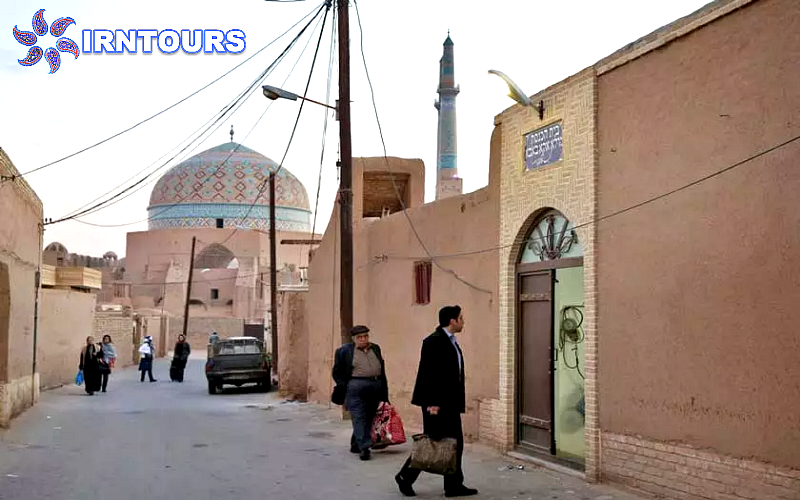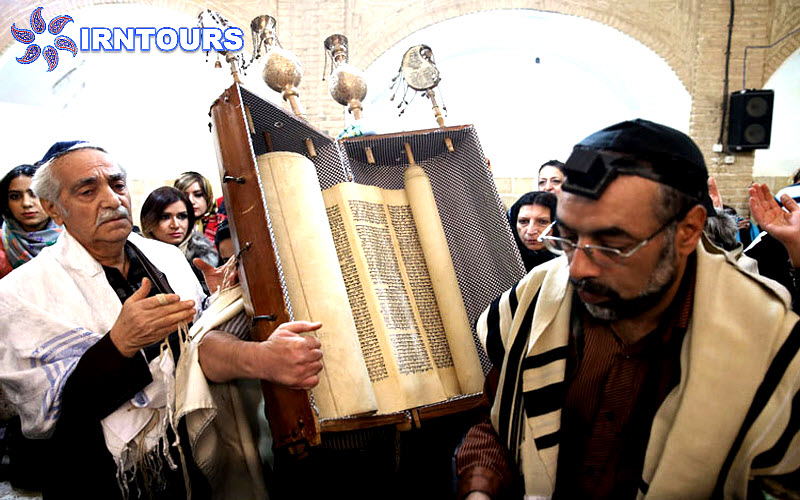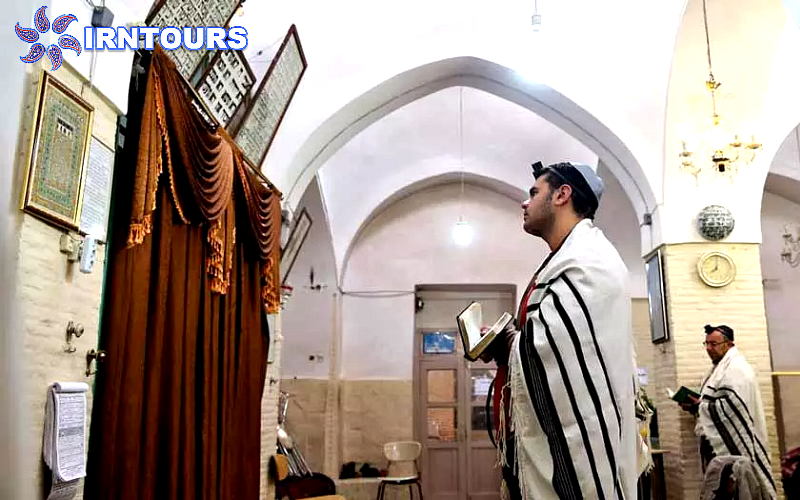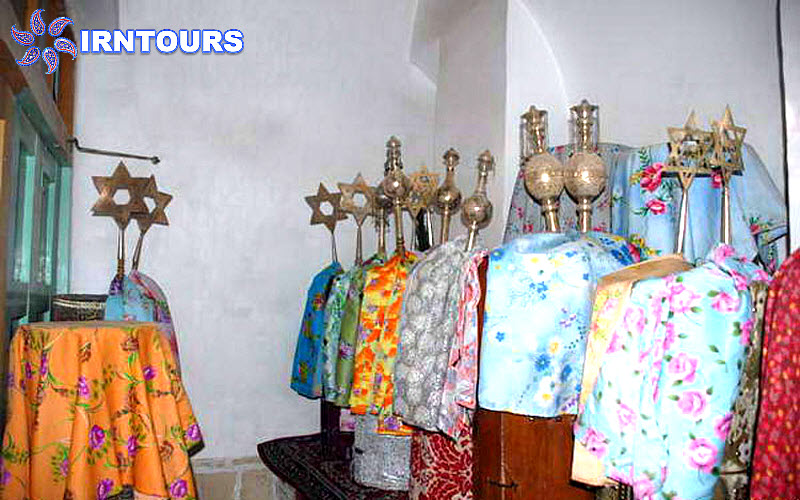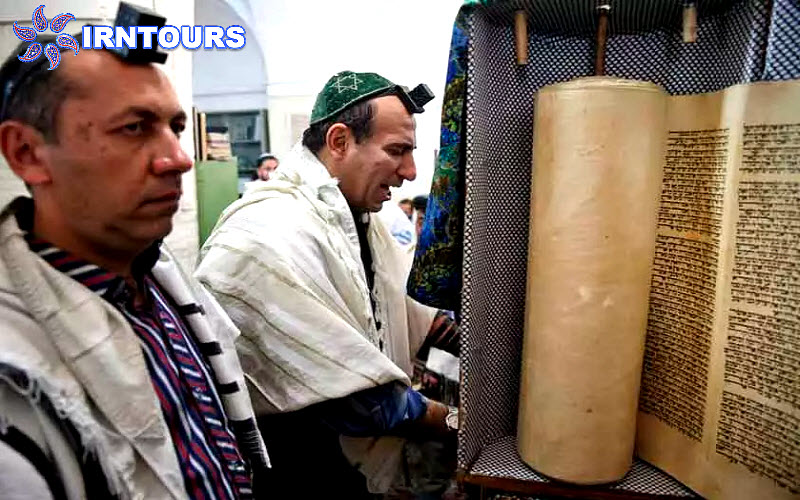About Mullah Agha Baba Synagogue
The presence of Jews in Iran is three thousand years old. Among the cities of Iran, the city of Yazd, although most of its people are Muslims; It has always witnessed the presence and life of religious minorities such as Zoroastrians, Jews and Armenians. Therefore, there are various temples for different religions in the ancient city of Yazd, one of its Jewish places of worship is the Molla Agha Baba Synagogue.
- Address: Yazd, Mosque Jame Street, Chaharsouk neighborhood, Mullah Agha Baba Synagogue
Who is Mullah Agha Baba ?
Mullah Agha Baba was a great Jewish rabbi (rabbi) and the result of “Harav ur Sharga” who lived during the period of Fath Ali Shah Qajar. Referring to his family genealogy, when anti-Semitism spread in Europe during the Renaissance period, Jews were forced to leave their homeland to save their lives and families. In the meantime, Ur Sharga’s grandfather – Rabbi Kias (Qiyath) – migrated to Iran and settled in the city of Sabzevar. Over time, with the rise of the Safavid dynasty and the formulation and implementation of laws against Jews, Ur Sharga’s ancestors and some Jews living in the northeastern regions of Iran moved to desert areas such as the city of Yazd.
Rabbi Shmuel (son of Rabbi Kias) has a son in Yazd and names him “Ur”. In the Hebrew dictionary, the word “Ur” means light and the word “sharga” means lamp; Such a name, in a way, refers to the Light of the Holy Torah.
Ur Sharga, who according to traditions, is the 135th descendant of Prophet David (AS) and is famous among Jews and even non-Jews; At the age of twelve, he received the title of “Rabbi” and by spending his youth, he was able to assume the responsibility of the religious leadership of the Jewish community of Yazd. It was at that time that the city of Yazd became known as one of the religious centers and the cradle of Jewish religious leaders in Iran and became known as “Little Jerusalem”. It should also be noted that during that period, there was a great change in the life of the Jews of Yazd.
Rabbi Or Sharga, after marrying his wife Melka, had two sons named “Shmuel and Meshe”, who later, like their father, passed the higher degrees of the Jewish priesthood and reached the rank of “Harav”.
In general and in summary, Mullah Agha Baba’s ancestors can be named as follows: Mullah Qiyas (Qiyath), Mullah Shmuel, Mullah Or Sharga, Mullah Shmuel, Mullah Meshe (Mullah Agha Baba), Mullah Or and Rabbi Yusuf Or Sharga (Mullah Yusuf Yazdi)
The tomb of Harav Ur Sharga and his sons, Rabbi Shmuel and Rabbi Meshe, is located in a large garden with an area full of pine and olive trees in the Jewish cemetery of Yazd, which is decorated with a beautiful design and traditional colors of cream and brown, and has a special place; Every year, especially on the anniversary of the death of this Jewish scholar, many Jews from all over Iran and the world travel to Yazd to visit his tomb.
Of course, it goes without saying that due to the small interior space of the tombs, those who are interested should enter and visit in order.
Features of Mullah Agha Baba Mullah Haider Synagogue
In general, Synagogue is the name of a place where Jews pray or hold their religious meetings and ceremonies. Mullah Agha Baba Synagogue, as a place of pilgrimage and history, has various features and spaces, some of
which are:
- Traditional architecture and beautiful traditional plaster ceilings
- 2 entrance in the south and west side alleys
- A yard called summer house and a covered space called winter house
- A special room for worshipers to pray and light candles
- An image attributed to Prophet Moses (pbuh) with a scroll containing the “Ten Commandments” in his hand
- 4 parallel bodies and 3 rows (porches and halls covered with vaults) with simple percussion covering in the courtyard
- A brick space on the eastern side of the nave as a separator of the inner part in the form of a half-floor for the presence of women.
- 9 arch fountains in Shabestan with several columns and one meter high brick interior walls and straw exterior walls overlooking the alley.
- A Sefer Torah (Sefer Torah) _Hebrew dictionary meaning a large and scroll-like book to call the 5 Hebrew holy books or a handwritten copy of the Torah for reading daily worship and prayer at the beginning of each prayer.



